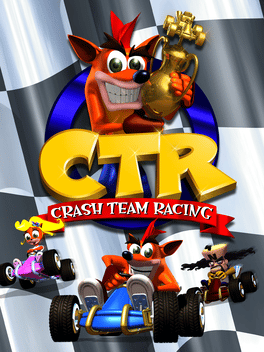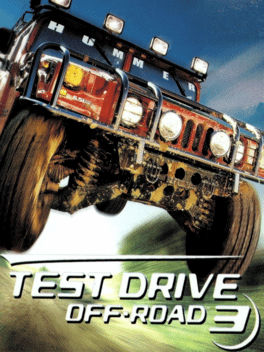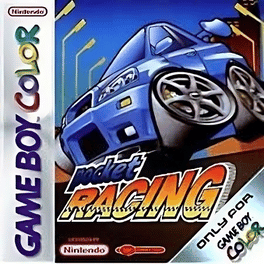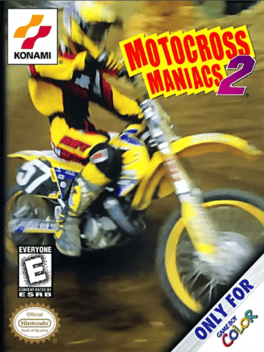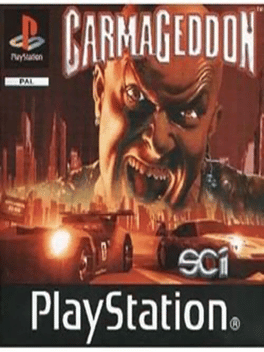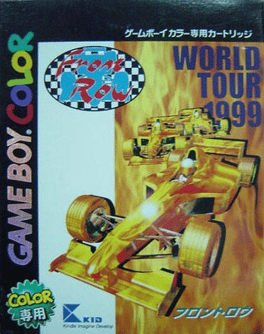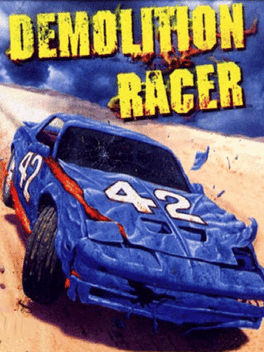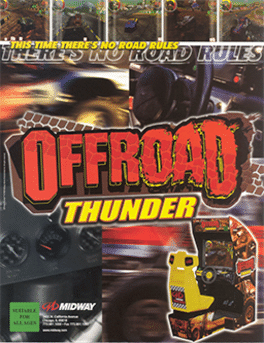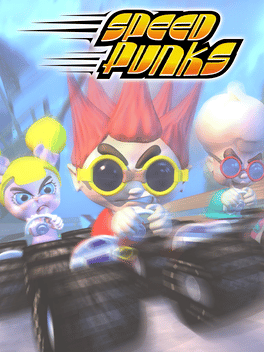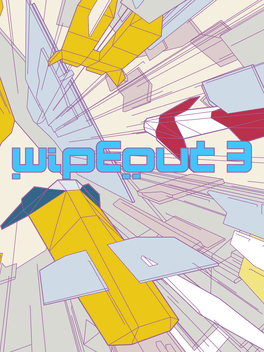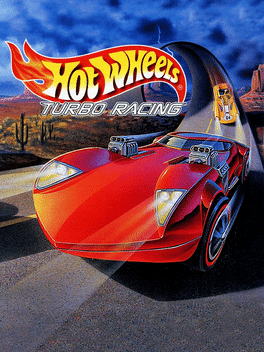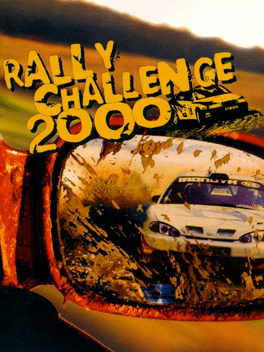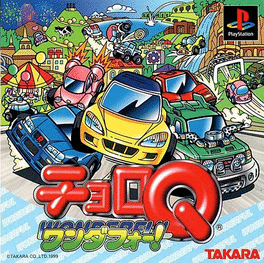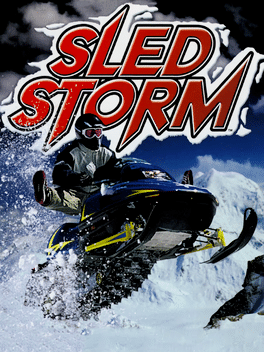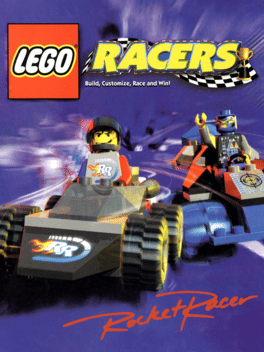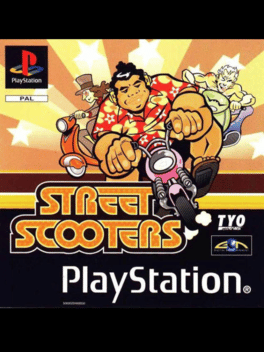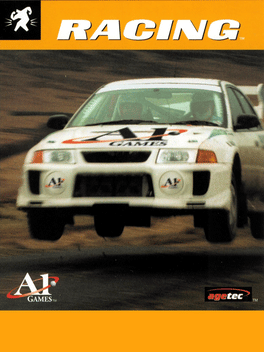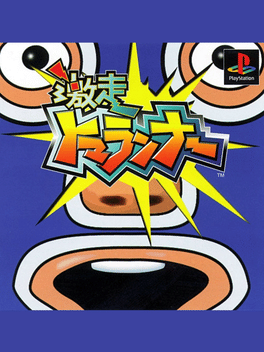New Racing Games - Page 117
-
Test Drive 6
1999
-
Crash Team Racing
1999
Crash Team Racing
1999
star 8.4Crash Team Racing is a kart racing game featuring popular characters from the Crash Bandicoot series. The gameplay is very similar to other kart racing video games like Mario Kart: players have to choose a character and compete against the other racers on various racetracks. The story mode allows you to choose any one of the characters to complete all the main races and beat the ultimate boss Nitrous Oxide. Each of the main races are against 7 other AI competitors with 5 boss races. There are also a few arcade modes up to 4 players. -
Test Drive: Off-Road 3
1999
star 5.2Some cars should stay on the pavement, while others are designed to go where no other vehicle has gone before. Those are the vehicles included in TEST DRIVE OFF ROAD. You can choose from four different vehicles: a Hummer, Land Rover Defender 90, Jeep Wrangler and Chevrolet K-1500 Z71. In addition to the four starting vehicles six more become available with extended play and include a monster truck, dune buggy, stock car, hot rod, Mini Cooper, and an off-road beetle. When you are ready to race there is a Mixed League and Class League to choose from. Mixed League is open to any vehicle and Class League restricts the entries to vehicles of a particular type. While you are racing the 12 tracks offer three different surfaces including dirt, snow, and rocks. Try to master the elements and go where other cars can't with TEST DRIVE OFF ROAD. -
Pocket GT Racing
1999
Pocket GT Racing
1999
Pocket Racing: the definitive racing game for the Gameboy Color. Super smooth real time 3D racing on 32 courses stretching across 4 areas will have you entertained for hours! 32 cars to customise as you progress. You can even change the colour of your car! 3 modes of gameplay: GT, Time Attach and 2 player link up. Maximum gameplay value as each car reacts differently. Fine tuning your car alters the handling capabilities even more. -
Motocross Maniacs 2
1999
Motocross Maniacs 2
1999
The action of motocross comes to the Game Boy Color with MOTOCROSS MANIACS 2. Hop on a motorcycle and hit the bumps, jumps, and loops of each track. Try to earn the fastest time in the Time Trial mode or take on five different tracks in the Championship mode. No matter how you play, there are power-ups scattered throughout the tracks including nitros, mini riders, jets, gasoline, super suspension, speed, and radials. If you don't like any of the 10 packaged tracks, you can create your own with the Track Editor option. There are a total of 255 obstacles and 32 different items that can be placed on any of the three tracks that you create. Once you have a masterpiece, share it with a friend via a link cable. Get motocross action with MOTOCROSS MANIACS 2. -
Carmageddon
1999
Carmageddon
1999
Carmageddon for Sony PlayStation - is a unique version of the first game from the Carmageddon series. Due to the serious PlayStation's hardware limitations nearly everything was done from scratch for this release. That is why all the levels are completely different from what was created for the original game. Also, the zombies were made as 3D models instead of sprites (by the way, there is no possibility to turn on pedestrians as an alternative to zombies, but their blood is still red). -
Front Row
1999
Front Row
1999
You can easily enjoy detailed and realistic machine settings (engine, tires, body) like a real F1. Machine (team) can be selected from 8 types. Equipped with a full-scale world tour mode, aiming to become a world champion by racing on all 16 courses around the world, including Japan, England, and Australia. In addition, a single race mode where you can choose your favorite course and enjoy the race, and a time attack mode aiming for the fastest lap are also installed. Of course, the communication function allows two people to fight hotly. -
Demolition Racer
1999
Demolition Racer
1999
star 7.9Demolition Racer is a racing game with a twist. Rather than a game that just requires you to try and win the race, this game gives you points to destroy the other racers' cars. The game has many styles of game play so you don't have to play the same style each game. There are 5 game styles in the Single Race section of the game. This section does not count towards unlocking cars or tracks. It is for practice and just plain fun. The main style is Demolition. In Demolition, you race against other cars around the track and get points for hitting them, spinning them in circles and knocking them into the wall. You also get a big bonus for landing on top of a car which will immediately destroy the car. When you finish the race, your final position is found by multiplying the points you got from hitting the other cars with the points that you got for the position you finished in. So if you finish first, but never hit anyone, you won't win the race. -
Simple 1500 Series Vol. 17: The Bike Race
1999
Simple 1500 Vol.17 - The Bike Race is a supercross racing game in which you can compete in a series mode or a single race mode. Differents bikes to buy after you earn money winning races and 5 differents characters to choose. -
Offroad Thunder
1999
Offroad Thunder
1999
This off-road racing game from Midway is part of the company's "Thunder" line of products. It was released into arcades in 1999. -
Speed Punks
1999
Speed Punks
1999
star 7.2Speed Punks is a racing video game up to two players and four with a multi-tap for PlayStation. The game involves racing around a variety of tracks while using several weapons; including items that make the racer's speed increase, missiles, and slime. -
Wipeout 3
1999
Wipeout 3
1999
star 8The third release of Psygnosis's seminal anti-grav racing series, and also the first game from the series to remain exclusive to the PlayStation. Set in the "F7200 Anti-Gravity Racing League", players control anti-gravity racing craft to eliminate competitors and complete events across a futuristic urban metropolis. -
Hot Wheels Turbo Racing
1999
star 6.3Hot Wheels Turbo Racing is a racing video game for the Nintendo 64 released in 1999. It features vehicles based on the Hot Wheels series of toys. It also features Kyle Petty's 1999 NASCAR stock car, as it was sponsored by Hot Wheels. It also features music from artists like Primus and Mix Master Mike. The focus of the game is racing one of a selection of cars through various themed tracks. Secret tracks can be accessed by winning and new cars can be used by finding the 'new car' bonuses hidden in each stage. -
Rally Challenge 2000
1999
Rally Challenge 2000
1999
Speed is the name of the game in this realistic racing experience. Featuring nine unique vehicles, RALLY CHALLENGE 2000 delivers high-octane action, with plenty of options to keep the replay value high. The controls are simple, but the competition is stiff as you jet through the three tracks at three different levels of difficulty. To add to the excitement, your co-pilot is by your side, calling out turns and alerting you to what's around the corner. The game's four distinct play modes offer limitless challenges: there's a user-friendly Arcade mode, an intense four-player Versus mode, a convenient Practice mode, and a Championship mode which allows you to adjust your suspension, tires, gear ratios, and steering. Championship Mode the game's crown jewel presents you with a nine-race series, in which you must rack up more points than your competitors. If you're looking for a fast-moving racing game with tons of options, you've found it in RALLY CHALLENGE 2000. -
Choro Q Wonderful!
1999
Choro Q Wonderful!
1999
Choro Q Wonderful! is an RPG developed by E-game and published by TAKARA, released for the Sony PlayStation in 1999. -
Sled Storm
1999
Sled Storm
1999
star 7Sled Storm is a series of snowmobile racing video games published and developed by Electronic Arts and released in North America on July 31, 1999 and in Europe on August 11, 1999. It gained critical acclaim due to its original concept of being one of the first snowmobile racing titles. The series currently consists of two games, both of which are named simply Sled Storm. The game features snowmobiles (referred to as sleds), stunts and fourteen snow-covered courses consisting of slippery slopes, inclement weather and treacherous cliffs. Six racers were selectable from the outset and two more were unlockable, each of which had different snowmobile handling attributes. -
LEGO Racers
1999
LEGO Racers
1999
star 6.1Lego Racers is set in the fictional Legoland universe, the game depicts Rocket Racer, the "greatest racing champion" in Legoland. After becoming bored from beating everyone at racing, he decides to create a racing contest, and finds the best racers in the history of Legoland using a dimensional warp machine created by his friend, Veronica Voltage, a genius scientist and mechanic. The player takes on the hosts and co-racers in an attempt to beat Rocket Racer and become the "Greatest Lego Racer of All Time". -
Street Scooters
1999
Street Scooters
1999
It's time to grab your Hawaiian shirt, slap on your headphones and mount your scooter as you embark on the fastest, craziest, most frenetic racer on two wheels As well as racing against the wackiest bunch of misfits ever to be gathered on one screen, you also need to use your skills and judgement to avoid the hopping-mad cat, the flying chunks of Tuna and a small thing called road safety! -
Racing
1999
Racing
1999
Racing as the title suggests is a simple racing game. It features both a short and a long distance race course, a mirrored version of the long course, plus different skill levels. Before a race begins, players select a car (out of 6 total), and then set whether they want automatic or manual transmission, and whether they want a drift or grip setting. Races have the player racing against 3 opponent racers. Players try to attain the fastest lap times and the fastest total race time while trying to defeat their opponents. The players fastest times can then be saved. The game also contains a brief tutorial that explains the controls and some techniques of racing. -
Gekisou TomaRunner
1999
Gekisou TomaRunner
1999
Gekisou TomaRunner is an on-foot racing game with various crazy/fantasy/fable/mythological characters where the aim is to navigate the various split path tracks to victory. The game puts heavy emphasis on using the terrain to gain the upper hand over the opponent, and on top of that there are several bonus items to pick up which either can aid the player or be used as weapons against the opponents. The characters all run at a set speed, but using the left and right arm as well as well timed jumps on poles, springboards and hurdles will give the player a speed boost. If enough momentum is gained, the character leans forward and starts dashing at a much faster speed. Some areas will even allow the player to be airborne for a certain amount of time if the right path is chosen and if enough speed is gained. Hitting obstacles, getting punched by opponents or having any of the "weapon" items used against the player will slow their speed down significantly, sometimes even resulting in the character falling over in a stunn

